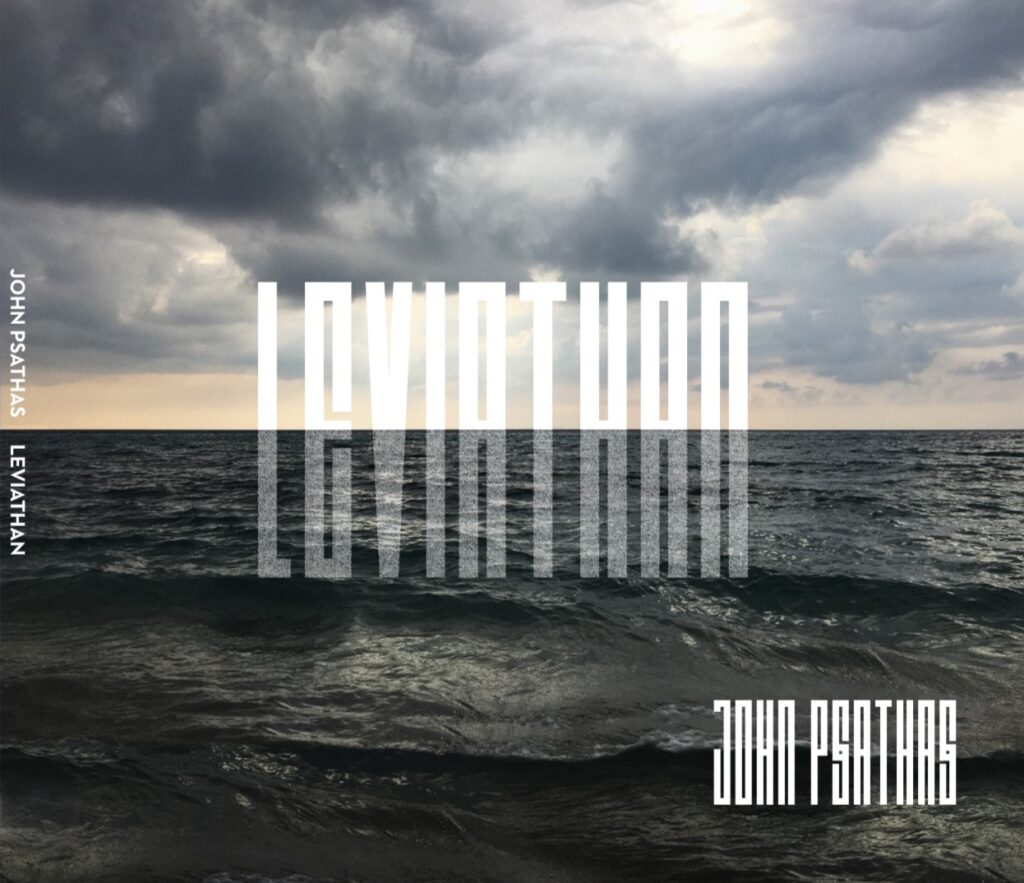ROSS HARRIS – Notes from the Front (texts by Vincent O’Sullivan)
DAME GILLIAN WHITEHEAD – Mate Ururoa (libretto by the composer)
ROSS HARRIS – Song-cycle “Notes from the Front”
Richard Greager (tenor), Matthew Ross (violin), Emma Sayers (piano)
DAME GILLIAN WHITEHEAD – Chamber Opera “Mate Ururoa”
Cast: David Tahere (Captain Roger Dansey)
Brent Allcock (Commanding Officer)
Ariana Tikao (Whaea / Taonga Puoro)
Director: Sara Brodie
Theatrical Designers: Jacob Banks/Rebecca Bethan Jones
Conductor: Hamish McKeich
Stroma Contemporary Ensemble
The Hannah, Wellington
Friday, 11th July, 2025
Wellington Opera has surely brought off a kind of coup with these two works, Gillian Whitehead’s opera Mate Ururoa and Ross Harris’s song-cycle Notes from the Front being brought together for performance at a time when people everywhere on our planet surely have no greater, nor more urgent cause to question the rationalization, antecedents and vindication of war. Each of these stories draws from the same source, the conflict known as the First World War (1914-18), in which millions of people, mostly soldiers, but also civilians, perished, and which, ironically, drew in significant participation from the country geographically furthest from the actual conflict – Aotearoa, New Zealand.
Of these two works the earlier (2014) and first-performed was Ross Harris’s Notes from the Front (the title in this context practically self-explanatory), with the text of the seven songs drawing from the letters “home” of Dunedin-born Alexander Aitken, who enlisted with the Otago Infantry as part of the New Zealand Expeditionary Force. The letters were written in places where he served in action, from Gallipoli to the Somme, at which latter place he was wounded. Aitken was particularly remembered for smuggling a violin into his “kit” to take with him and play on occasions in between the sequences of “action” (the instrument miraculously survived all of this and was brought home, to be later donated to the Otago Boys School, where it is currently on display).
Though not all verbatim quotes from Aitken’s letters, poet Vincent O’Sullivan based the songs’ texts on the latter, summarising the soldier’s traumatic (and in places even surreal) experiences while on active service, and poignantly rounding the sequence through a declaration to Winifred, his future wife, whom he had met when a student, and with whom he subsequently emigrated to Scotland, taking up a mathematics professorship at Edinburgh University.
Aitken’s feelings regarding the war and its effects upon humanity in general were here laid bare in the first, and in places hallucinatory song Visions, much later, which delineate the psychological traumas that haunted him throughout his life – “nightmare seizes me – the veiled figures…….I count on nothing more….” – words hauntingly voiced by tenor Richard Greager, and underpinned by pianist Emma Sayers’ beautifully-focused touch, along with violinist Matthew Ross’s wraith-like postscript. The second song The Notes depicts Aitken hauntingly playing his violin in situ, “between concussions”, the latter suggested by short, sharp piano irruptions – along with bemused “that’s his violin” comments from his listeners.
Bitter irony and savage underlinings characterise the third song’s outbursts, the piano subdued, its notes almost cowering, as the singer describes the hell of the trenches, a nightmare like nothing described in official dispatches – “it’s the blood – and the guts – and the stink of the flies!….that’s how you tell we’re Anzacs!…….” – Richard Greager grips our sensibilities as he describes people he knew from home – “Harry..…the bloke from Tuatapere……the sun turns black!….” as these people’s lives are destroyed, and the bitterness reaches its peak at the words “…..it’s a change from Gallipoli, soldier, when you reach the Somme….”
The violin begins the elegiac fourth song On a Different Note as if playing “Deutschland Uber Alles”, accompanied by a deep piano rumbling which then breaks off – the notes the violinist plays reminds the singer of Haydn’s tune, heard at another Christmas from a German’s violin –“….a single line, defying war…..” expressed in deep-throated tragedy. The next song Pretty Much Verbatim is the blackest irony possible, as the singer and piano characterise a fellow-soldier “Clark of Dunedin” with a description of how this friend sacrificed himself against a live grenade, holding it hidden from his mates – “…….it is pride enough to tell I was there…..what I breathe is his….”. Though more rhapsodic, the sixth song Close as this is just as unsparing, describing the soldier’s imagined reunitement with a friend killed on the battlefield, but alive, back in Otago – “on the peninsular……we met where one of us had no shadow, one of us living, one of us dead….close as this……”
The last piece, Song for Winifred is a tribute to Aitken’s wife and an impassioned hope for a return to a normal life together – begun by the violin and joined by the piano, the singer passionately declaims “….Love, love in any weather….in the summer grass – and God! – the seasons pass……” – beautiful and intensely moving. The work’s but one all-too-eloquent example from Ross Harris’s and Vincent O’Sullivan’s group of resounding collaborations regarding the subject of war’s inhumane ambition and senseless carnage.
Besides its own intrinsic qualities the Harris work made the perfect introduction to Gillian Whitehead’s Opera Mate Ururoa (a title translated as “fight bravely” or “fight to the death”, and taken from a Maori whakatauki, or proverb “Kaua e mate wheke, mate ururoa” (Don’t die like the octopus (that gives up easily), die like the shark (that keeps on fighting)). Whitehead undertook to write the work at the behest of David Tahere, a US-based Maori baritone whose whanau, he discovered, had close historical connections with that of Roger Te Kepa Dansey, the central character of the opera who enlisted as a member of the “Native Contingent” formed here when Britain declared war on Germany in 1914.
Dansey’s wartime story tells of the humiliation of both the Maori and Nepalese Gurkha soldiers being regarded as “second class” by the British hierarchy, and relegated to performing menial jobs like digging trenches – only when the casualty lists at places like Gallipoli deemed it necessary were Maori and Gurkhas allowed to fight. Promoted to the rank of captain, Dansey then fell foul of his commanding officers by refusing to follow orders which would result in his men facing certain and pointless death, resulting in his disgrace through accusations of cowardice and desertion, in the wake of his famous assertion regarding fighting a “white man’s war” where soldiers were “sent into” battle rather than “the Maori way” of men led by their chiefs from the front.
Thanks to the efforts of influential Maori politicians of the time Dansey’s true qualities of leadership were recognised and he was reinstated. After returning to the frontline in France at the Somme, he was gassed and had to be sent to England to recover – he remained in Europe for the next nine years, working on rehabilitation schemes in Belgium before returning to New Zealand in 1927 and settling in Rotorua, where he died in 1938 of complications resulting from his war injuries.
Whitehead wrote her own libretto for this work, intending at first for it to be a “working draft”, but deciding as she developed the piece further to retain it as a strong “from scratch” initiative, one creating its own on-going tradition. She was assisted throughout by David Tahere’s knowledge through his connections with Dansey’s surviving whanau, and by director Sara Brodie’s enthusiasm. respect and feeling for the project However, preparations for the first performance of Mate Ururoa at Carnegie Hall, New York, in November 2021 were unexpectedly thwarted by the Covid epidemic, so the “premiere” had to be rescheduled, not inappropriately, to its Southern Hemisphere origins.
Interviewed a couple of days before the premiere, the triumvirate of composer, director and lead singer delineated aspects of their respective journeys towards the oncoming performance. Whitehead, with several music-theatre pieces of different kinds under her belt, was calmly philosophical regarding outcomes, emphasising the phenomenon of a work existing only in the moment of performance, and expressing quiet confidence in the extent to which her colleagues would help successfully realise these outcomes. For Brodie there was “a humbling satisfaction” at what she felt privileged to be part of (she and Whitehead had previously worked together on a 2016 music-theatre piece of the latter’s, Iris Dreaming). Tahere characterised the opera as resembling something presented in a kind of “dream state”, with many “fragments” of the protagonist’s experience brought into play in vastly differing situations involving diametrically-opposed cultures, drawing attention to the composer’s representation of these differences, with the used of both conventional instruments (and taonga puoro (Maori instruments), straightaway giving an extra dimensional feel to these different worlds.
As with the earlier Ross Harris song-cycle, the presentation of the opera generated its own singular ambience of almost claustrophobic intensity in its depiction of a single individual pitting himself against almost insuperable odds with courage and resolve……my notes are as follows: Upon entering this wonderfully indeterminate but pliable performance space finely modulated by designer Rebecca Bethan Jones, and ambiently lit by Jacob Banks, David Tahere’s presence as Captain Roger Dansey flows into its world like a beam of light awakened by the taonga puoro “call” from one of the bird-song-like indigenous instruments played by Ariana Tikao, the singer’s words making reference to his birthplace, near Ohinemutu, in Rotorua – “Here the steam rises – my home, my resting place”…. and at once we realise that here is a man looking back over his life, the first reminiscence being his confrontation with Brent Allcock’s stiff upper-lipped Commanding Officer accusing Dancey of defying orders at Gallipoli in order to save the lives of his men. Conductor Hamish McKeich keeps his Stroma Ensemble forces on the boil throughout, their frequent interjections representing both the establishment and the individual, tracking the exchanges between both personalities and the interaction of modern instruments and taonga puoro to underline the conflict between not only Pakeha and Maori but officers and enlisted men.
The mention of a “white man’s war” and Maori’s progress from being an “enemy” of the British to an “ally” brings great declamatory tones from Tahere, and a distinctive “conch shell-like” call from Ariana Tikao’s taonga puoro instrument accompanied by the cracking together of percussive stones. As Dansey recounts his people’s history of interaction with the British, McKeich and his players elaborate with music that fuses sounds of warfare with ceremonial regimental-like calls – and the singer intones the opera’s theme ”Kaua e mate wheke, mate ururoa!” (Die not like an octopus, but like a hammerhead shark!) before breaking into the famous haka, followed by a lament, in Maori “Let me weep for my dead! – they are not like the cabbage tree that springs up again!” (according to witnesses the haka by the soldiers apparently took place on the beaches at Gallipoli….).
Seemingly unimpressed, the British Officer again appears demanding an explanation for Dansey’s disobedience, to which, to the accompaniment of the taonga puoro Dansey refutes the charge and sings about the chiefs in Maoridom “leading their warriors into battle” – unlike in the “white man’s war” where soldiers alone are sent to slaughter! His explanation is ignored, and he is dismissed and sent back to New Zealand – sostenuto wind tones then are sounded to haunt the words “I saved many lives”, to a ferment of instrumental affirmation!
From here the music and the scenario becomes almost transcendent, with Tahere recounting his subsequent reinstatement due to intervention by influential Maori politicians of the time, his return to Europe and his experiences in the trenches at the Somme, where he is gassed and has to be relocated to England to recover – we witness his delirium (a bull-roarer sounding what seemed like a heartbeat as he struggles to rid himself of the poison in his system) – the players blow soundlessly through their instruments to further depict the desolation – and he imagines being comforted by his mother (who is sung by Ariana Tikao), her words foretelling his recovery and his work in post war Belgium, helping people recover their lives.
The Soldier sings a duet with his mother – these exchanges have a “time standing still” feeling, as we sense when she sings to him he has since returned to his present back in New Zealand and is near death. “You will stay here beside the rippling waters of Lake Rotorua – Kua wheturangatia” – words which means “Return to the celestial realm of your ancestors”…… – What gave this particular performance a unique turn at this point was the voice of an audience member suddenly replying with a poropororoaki (a farewell to the dead) to the singer playing Dansey and then the rest of the assembled whanau of the story’s dying man standing and singing “Aue Ihu tirohia”, the official hymn of the 28th Maori Battalion….. and so we sing the displayed words with them…
The lights eventually do come up and we applaud, most vociferously when Gillian Whitehead comes to the stage to acknowledge our tribute – a redolently memorable glimpse into aspects of our nation’s past that continue to give crucial relevance to our somewhat tumultuous present!

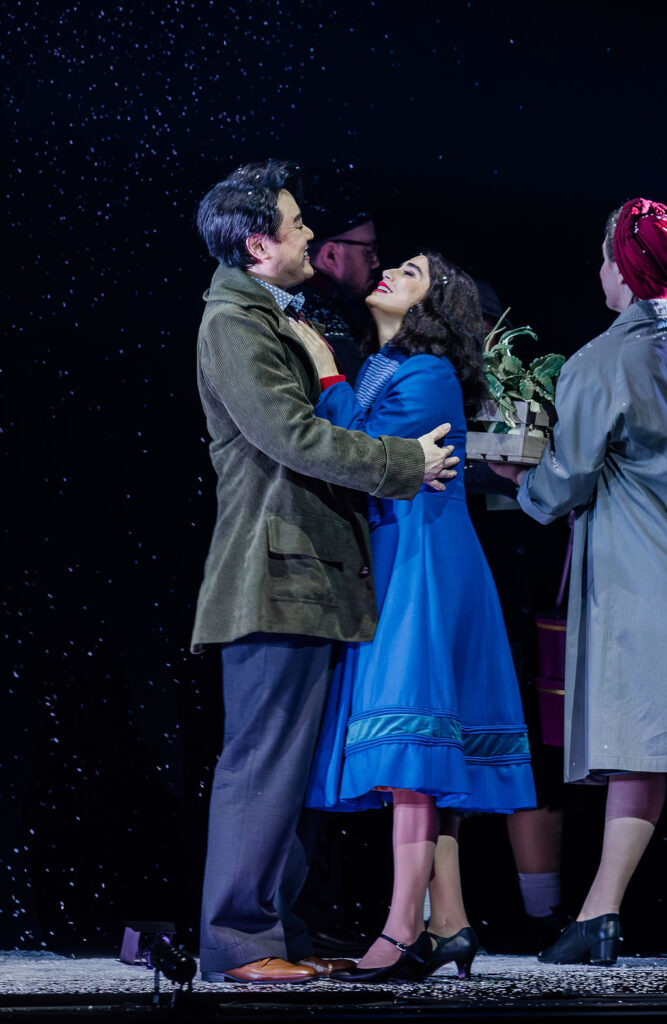
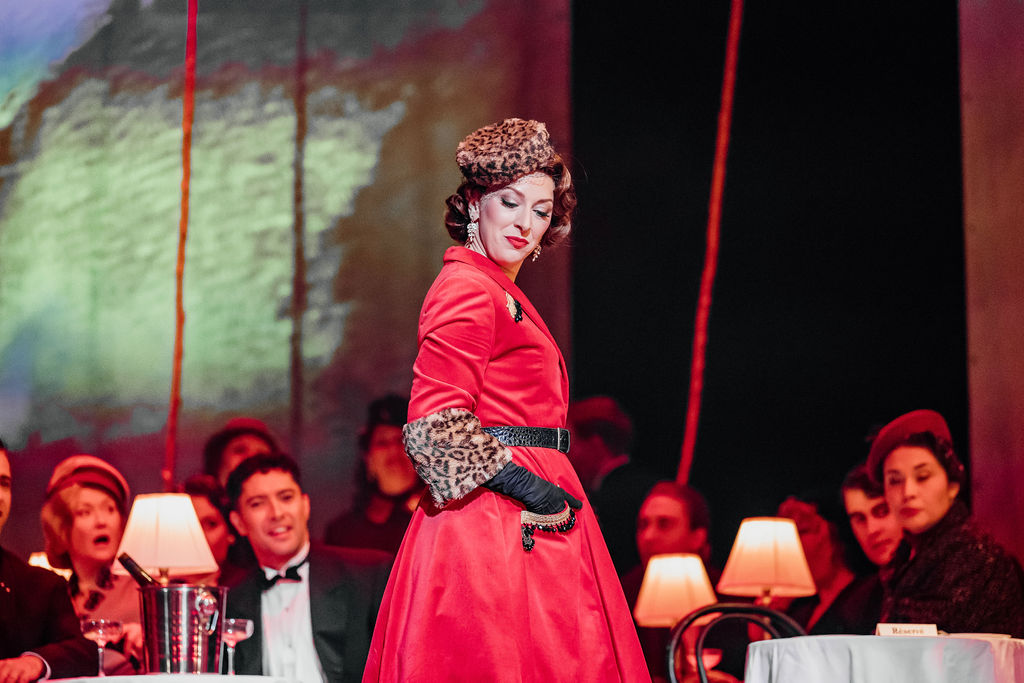 Emma Pearson as Musetta
Emma Pearson as Musetta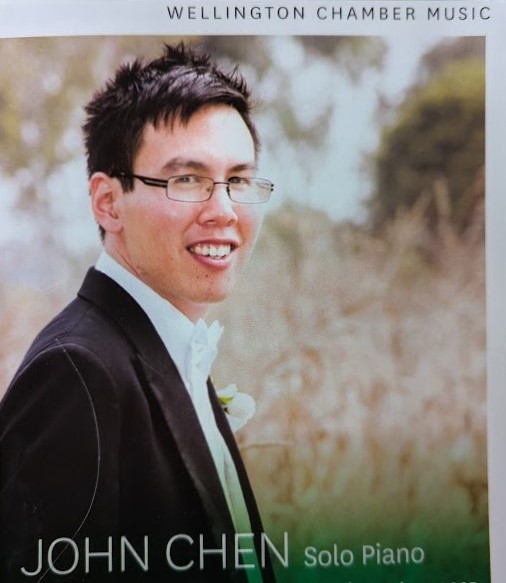 John Chen – French Piano Music Recital
John Chen – French Piano Music Recital Dmitri Shostakovich
Dmitri Shostakovich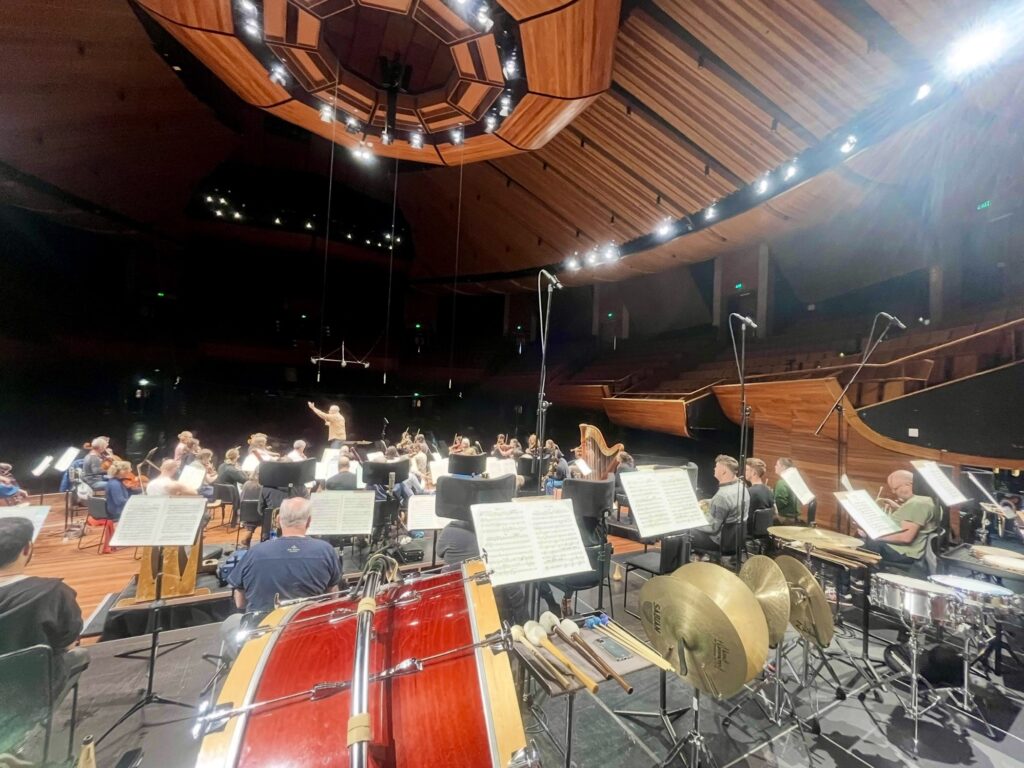 Orchestra Wellington with Marc Taddei rehearsing Shostakovich
Orchestra Wellington with Marc Taddei rehearsing Shostakovich